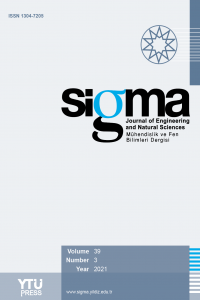Abstract
Pipes are mainly used in waste, drain and vent systems as well as transporting various liquids that might be corrosive, flammable, explosives, volatile, reactive, or sometimes hazardous to human health. Though pipes are used at the underground or above ground, all of them are exposed to vibration because of external factors. In this study, we focused on topology optimization of steel and PVC (Polyvinyl Chloride) pipes to get lighter ones which will lead to using less material during manufacturing, less CO2 emission while transporting them to usage areas by vehicles and easier assembling process. Firstly, new lightweight pipe designs were modeled, and then these novel pipe designs with lattice wall thickness were analyzed by using Ansys finite element program in clamped-free, hinged-hinged, and clamped-clamped boundary conditions to obtain the natural frequencies, mode shapes, and displacement values. Moreover, obtained finite element results for steel and PVC pipes were compared with analytical results calculated by using the equation to check and compare with the finite element results. Finite element results were found similar to analytical results at an acceptable level. The results show that lightweight pipes have similar natural frequency values to the commonly used pipe which has fully solid wall thickness and some significant results about displacement values were attained. Lastly, the effect of pipe material on vibration behaviors of pipes was investigated in depth.
References
- [1] Rishab Engineering, Common Causes of Piping Vibration and Its Effects on Piping Systems. Retrieved from Accessed at: https://www.rishabheng.com/blog/causes-and-effects-piping-system-vibration/. (Access on July 9, 2020).
Details
| Primary Language | English |
|---|---|
| Subjects | Engineering |
| Journal Section | Research Articles |
| Authors | |
| Publication Date | September 27, 2021 |
| Submission Date | September 3, 2020 |
| Published in Issue | Year 2021 Volume: 39 Issue: 3 |
IMPORTANT NOTE: JOURNAL SUBMISSION LINK https://eds.yildiz.edu.tr/sigma/


